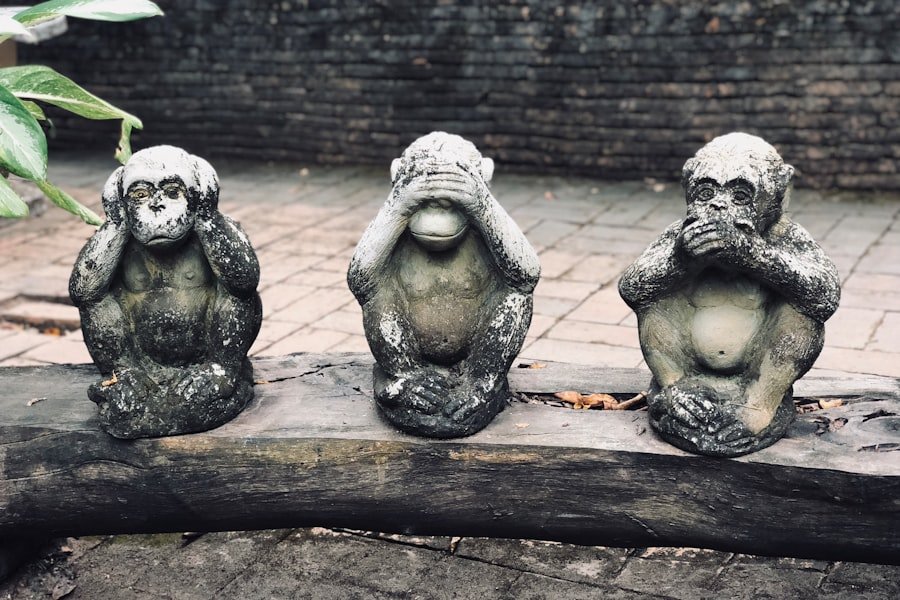Understanding the differences between urban and rural life in China is crucial for anyone looking to gain a deeper understanding of Chinese culture. China is a vast country with a rich history and diverse population, and the contrast between urban and rural areas is stark. In this blog post, we will explore the vocabulary related to urban and rural life in China, highlighting the differences in lifestyle, culture, and economy. By learning these vocabulary words, you will be better equipped to communicate effectively and navigate the cultural nuances of both urban and rural areas in China.
Understanding the Differences Between Urban and Rural Life in China
China is a country of contrasts, with bustling metropolises like Beijing and Shanghai standing in stark contrast to the serene countryside. The differences between urban and rural areas in China extend beyond just the physical landscape; they encompass lifestyle, culture, and economy as well.
In urban areas, life is fast-paced and dynamic. Cities are characterized by towering skyscrapers, bustling streets, and a vibrant nightlife. The economy is driven by industries such as finance, technology, and manufacturing. Urban dwellers have access to modern amenities such as high-speed internet, public transportation systems, and a wide range of entertainment options.
On the other hand, rural areas in China are characterized by a slower pace of life and a closer connection to nature. Agriculture plays a significant role in the rural economy, with many villagers engaged in farming or related industries. Villages are often close-knit communities where traditions and customs are deeply rooted. Access to modern amenities may be limited, with basic infrastructure such as roads and healthcare facilities sometimes lacking.
Understanding these differences is essential for effective communication and cultural awareness. By familiarizing yourself with the vocabulary related to urban and rural life in China, you will be better equipped to navigate these contrasting environments and engage with locals in a meaningful way.
Vocabulary for Urban Life in China: City, Traffic, and Buildings
When it comes to urban life in China, there are several key vocabulary words that are essential to know. Let’s start with the basics:
– City (chéngshì): This refers to a large and densely populated urban area. Examples of cities in China include Beijing, Shanghai, and Guangzhou.
– Traffic (jiāotōng): This refers to the movement of vehicles and pedestrians on roads and streets. Traffic congestion is a common issue in many Chinese cities.
– Buildings (lóu): This refers to structures that are constructed for human habitation or use. In urban areas, you will find a variety of buildings, including residential apartments, office buildings, and shopping malls.
Other important vocabulary words related to urban life in China include:
– Skyscraper (gāo lóu): This refers to a very tall building with multiple floors. Skyscrapers are a common sight in Chinese cities.
– Subway (dìtiě): This refers to an underground railway system. Many Chinese cities have extensive subway networks that provide convenient transportation options for residents and visitors.
– Shopping mall (gòuwù zhōngxīn): This refers to a large enclosed building complex that houses multiple retail stores, restaurants, and entertainment facilities.
By familiarizing yourself with these vocabulary words, you will be able to navigate urban areas in China more effectively and engage in conversations about city life with locals.
Vocabulary for Rural Life in China: Agriculture, Nature, and Villages
In contrast to the bustling cities, rural areas in China offer a different way of life. Here are some key vocabulary words related to rural life:
– Agriculture (nóngyè): This refers to the practice of cultivating crops and rearing animals for food, fiber, medicinal plants, and other products used to sustain and enhance human life.
– Nature (zìrán): This refers to the natural world, including plants, animals, landscapes, and other features of the physical environment.
– Villages (cūn): This refers to small communities in rural areas where people live and work. Villages in China often have a strong sense of community and are closely connected to the land.
Other important vocabulary words related to rural life in China include:
– Farm (nóngchǎng): This refers to a piece of land used for agricultural purposes. Farms in rural areas of China may grow crops or raise livestock.
– Rice paddy (dào): This refers to a flooded field in which rice is grown. Rice is a staple food in many parts of China, particularly in rural areas.
– Countryside (xiāngcūn): This refers to the rural areas outside of cities and towns. The countryside is known for its natural beauty and slower pace of life.
By learning these vocabulary words, you will be able to engage in conversations about rural life in China and gain a deeper appreciation for the country’s agricultural heritage.
Comparing Urban and Rural Transportation in China
Transportation options and infrastructure vary greatly between urban and rural areas in China. Here are some vocabulary words related to transportation in both settings:
– Bus (gōnggòng qìchē): This refers to a large motor vehicle used for transporting passengers, typically along a fixed route.
– Subway (dìtiě): As mentioned earlier, this refers to an underground railway system. Subways are primarily found in urban areas and provide a convenient mode of transportation for residents and visitors.
– Bicycle (zìxíngchē): This refers to a human-powered vehicle with two wheels that is propelled by pedaling. Bicycles are commonly used for short-distance travel in both urban and rural areas of China.
In urban areas, transportation infrastructure is well-developed, with extensive networks of roads, highways, and public transportation systems. Cities often have multiple options for getting around, including buses, subways, taxis, and ride-sharing services.
In rural areas, transportation options may be more limited. Roads may be less developed, and public transportation services may be scarce. Many villagers rely on bicycles or motorcycles for transportation within their communities.
By familiarizing yourself with the vocabulary related to transportation in both urban and rural areas, you will be better prepared to navigate these different environments and understand the challenges and opportunities they present.
Exploring Urban and Rural Food Culture in China

Food culture and cuisine vary greatly between urban and rural areas in China. Here are some vocabulary words related to food and dining in both settings:
– Restaurant (fànguǎn): This refers to a business establishment where meals are prepared and served to customers.
– Street food (jiēdào shípǐn): This refers to food that is prepared and sold by vendors on the streets or in public places.
– Farm-to-table (cūnzhí zhuānshū): This refers to a culinary movement that emphasizes using locally sourced ingredients in restaurant menus.
In urban areas, you will find a wide variety of dining options, ranging from high-end restaurants serving international cuisine to street food stalls offering local specialties. Urbanites often have access to a diverse range of ingredients and flavors from around the world.
In rural areas, food culture is often centered around locally grown ingredients and traditional recipes. Villagers may rely heavily on agriculture for their food supply, with many households growing their own fruits, vegetables, and grains. Traditional cooking methods and recipes are passed down through generations, preserving the culinary heritage of rural communities.
By learning the vocabulary related to food and dining in both urban and rural areas of China, you will be able to appreciate the diversity of Chinese cuisine and engage in conversations about food culture with locals.
Daily Life in Urban and Rural China: Vocabulary for Activities and Routines
Daily activities and routines differ between urban and rural areas in China. Here are some vocabulary words related to daily life:
– Work (gōngzuò): This refers to the activities, tasks, or duties that a person engages in to earn a living.
– School (xuéxiào): This refers to an institution where students receive education and instruction.
– Market (shìchǎng): This refers to a place where goods are bought and sold, typically in an open-air setting.
In urban areas, daily life is often characterized by a fast-paced work culture. Many urbanites have demanding jobs and long working hours. Schools in cities are often well-equipped with modern facilities and offer a wide range of extracurricular activities.
In rural areas, daily life is more closely tied to the land and nature. Many villagers engage in agricultural work, tending to their crops or livestock. Schools in rural areas may have fewer resources but often foster a strong sense of community and provide education tailored to the needs of the local population.
By learning the vocabulary related to daily activities and routines in both urban and rural areas, you will gain a deeper understanding of the different lifestyles and priorities of people living in these contrasting environments.
Differences in Education and Work Opportunities in Urban and Rural China
Education and work opportunities vary greatly between urban and rural areas in China. Here are some vocabulary words related to education and work:
– University (dàxué): This refers to an institution of higher education where students pursue undergraduate or graduate degrees.
– Factory (gōngchǎng): This refers to a building or group of buildings where goods are manufactured or assembled on a large scale.
– Entrepreneurship (chuàngyè): This refers to the activity of setting up a business or businesses, taking on financial risks in the hope of profit.
In urban areas, there are more opportunities for higher education and professional development. Cities are home to prestigious universities and research institutions, attracting students and scholars from around the world. The urban economy offers a wide range of job opportunities, particularly in industries such as finance, technology, and manufacturing.
In rural areas, access to higher education may be limited, and job opportunities may be more focused on agriculture and related industries. However, there is a growing trend of rural entrepreneurship, with villagers starting their own businesses to create economic opportunities within their communities.
By familiarizing yourself with the vocabulary related to education and work in both urban and rural areas of China, you will gain insights into the different paths and opportunities available to individuals in these contrasting environments.
Health and Wellness: Contrasting Urban and Rural Lifestyles in China
Health and wellness practices and lifestyles differ between urban and rural areas in China. Here are some vocabulary words related to health and wellness:
– Hospital (yīyuàn): This refers to an institution where medical treatment is provided to patients.
– Gym (jiànshēn fáng): This refers to a facility equipped for physical exercise or training.
– Traditional medicine (zhōngyī): This refers to a system of medicine based on traditional Chinese theories and practices.
In urban areas, access to healthcare facilities is generally better than in rural areas. Cities have well-equipped hospitals and clinics that offer a wide range of medical services. Urbanites also have access to fitness centers, gyms, and wellness studios that cater to their health and fitness needs.
In rural areas, healthcare facilities may be limited, with villagers often relying on traditional medicine or home remedies for minor ailments. However, there is a growing awareness of the importance of healthcare in rural communities, with efforts being made to improve access to medical services.
By learning the vocabulary related to health and wellness in both urban and rural areas of China, you will gain a deeper understanding of the different approaches to healthcare and well-being in these contrasting environments.
Appreciating the Diversity of Chinese Culture through Vocabulary for Urban and Rural Life Contrasts
Understanding the differences between urban and rural life in China is essential for anyone looking to gain a deeper appreciation of Chinese culture. By learning the vocabulary related to these differences, you will be better equipped to communicate effectively and navigate the cultural nuances of both urban and rural areas in China.
From the bustling cities with their skyscrapers and vibrant nightlife to the serene countryside with its agricultural heritage and close-knit communities, China offers a rich tapestry of experiences. By familiarizing yourself with the vocabulary for urban and rural life, you will be able to engage in meaningful conversations about these contrasting environments and gain insights into the diverse lifestyles, cultures, and economies that make up this vast country.
So whether you find yourself exploring the bustling streets of Beijing or immersing yourself in the tranquility of a rural village, take the time to appreciate the diversity of Chinese culture and the unique experiences that each setting has to offer. By learning the vocabulary for urban and rural life in China, you will be able to connect with locals on a deeper level and gain a richer understanding of this fascinating country.
If you’re interested in exploring the contrasts between urban and rural life in China, you may also enjoy reading the article “A Guide to China Homestay” on the LC Chinese School website. This article provides valuable insights into the experience of living with a Chinese family, allowing you to immerse yourself in the local culture and gain a deeper understanding of both urban and rural lifestyles. Check it out here.









